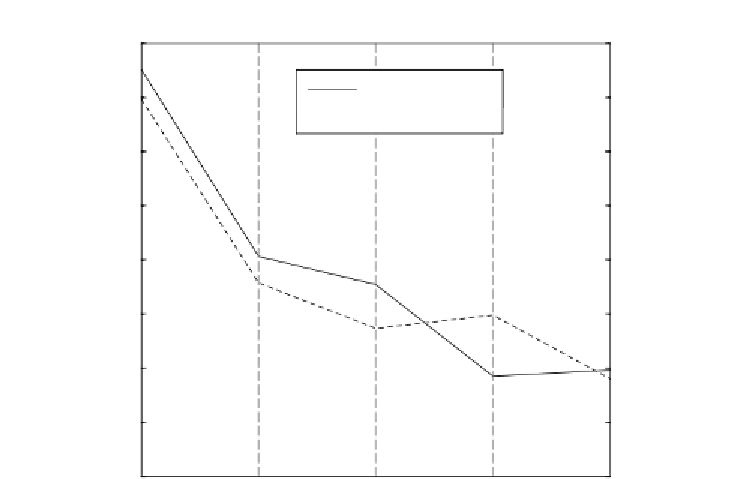Digital Signal Processing Reference
In-Depth Information
1.35
8.0
Average SD (dB)
Average SD (dB)
Outliers at 2 dB
7.0
1.30
6.0
5.0
1.25
4.0
3.0
1.20
2.0
1.0
1.15
0.0
W1
W2
W3
W4
W5
Weighting Method
Figure 5.14
Performance comparison of various weighting functions
•
W3: LSF inverse distance method
•
W4: Paliwal-Atal method
•
W5: Group delays method
The results are shown in Figure 5.14. Only average SD and the number of
outliers at 2 dB are shown, as there are no outliers at 4 dB in any of the cases.
Figure 5.14 clearly shows the performance gain given by the use of weighting
over the simple MSE method. As indicated, a well-chosen weighting method
can give a reduction of up to 0.15 dB in average SD and up to 5% in the
number of outliers. The figure also shows that some weighting methods
clearly outperform others. The weighting technique used in EFR and the LSF
inverse distance method are not the best. Better results are obtained with the
Paliwal-Atal method, however the best of all is the group delays method.
The main advantage of the group delays method is in the reduction in the
number of outliers at 2 dB (from 3% to 1.8%), whereas its average SD is
virtually identical to that of the Paliwal-Atal method.
5.9 Inter-frame Correlation
When quantizing LSF parameters, or any other parameter for that matter,
a good quantization scheme must make use of all the redundancies in the



Search WWH ::

Custom Search